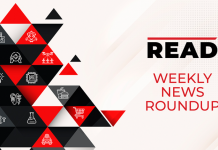Sunairio, pioneer of next-generation grid forecasting software that provides critical weather and energy insights, announced that it has launched Sunairio ONE (an Omniscale Next-generation Ensemble). Sunairio ONE now powers the company’s award-winning software for modern energy risk management.
Anticipating granular grid risk today is a daunting task that’s frustrated by a disjointed and inadequate technology landscape. Conventional weather forecasts are complex and slow, limiting their usefulness to modeling near-term events over relatively large areas — with forecast scenarios that misrepresent the chance of extremes. Longer-term forecasts are so inaccurate that the meteorological agencies themselves warn against using the data directly, forcing the industry to rely on historical analogues instead. And the new AI weather forecasts are unfortunately linked to these problems because they train off the same old data.
Sunairio ONE makes these approaches obsolete.
“We built Sunairio ONE from the ground up to solve these challenges, enabling unparalleled resolution, accuracy, and correct probabilities, complete with seamless coverage for the next hour, the next 15 years – and anywhere in between,” said Rob Cirincione, CEO, Sunairio. “The key is our unique data – Sunairio ONE is trained on the Sunairio High-resolution Earth Dataset (the SHED), our proprietary, high-resolution historical weather data archive that’s purpose-built to replicate granular risks for the modern grid.”
Also Read: Sungrow and ENGIE Complete 400 MWh of Europe’s Largest Battery Project
Sunairio started with the industry’s benchmark historical weather data, leveraged machine learning to sharpen resolution by 100x, then trained ONE on that data while incorporating changing climate fundamentals. Sunairio ONE generates 1,000-member hourly ensembles compared to traditional methods that stop at 50. The result is unprecedented forecast fidelity for load, renewables, and grid stress across all time scales.
“Alternative forecast methods rarely issue more than 50 forecast scenarios, preventing users from seeing the make-or-break events,” Cirincione explained. “Imagine if I told you there was a 1-in-50 chance of winning the lottery, except you don’t win the lottery, you black out the power grid or bankrupt your company. That’s the risk we’re taking with these limited forecasts.”
“More recently, there’s been a burst of new AI-powered weather forecasts, but what often gets overlooked is that these AI models are only as good as the data they’re trained on — and these models have all been trained on the same public, relatively low-resolution archive,” continued Cirincione. “That means they’re all susceptible to missing the same events — especially extreme events — which are critical in modern power grids where just 1% of hours account for 30% of grid stress.”
A larger forecast ensemble also improves accuracy. For example, compared to grid-level forecasts provided by ISO operator ERCOT, Sunairio’s hourly wind and solar forecasts are up to 20% more accurate on average while capturing the true risk of forecast misses and unprecedented extremes in the ensemble distribution.




